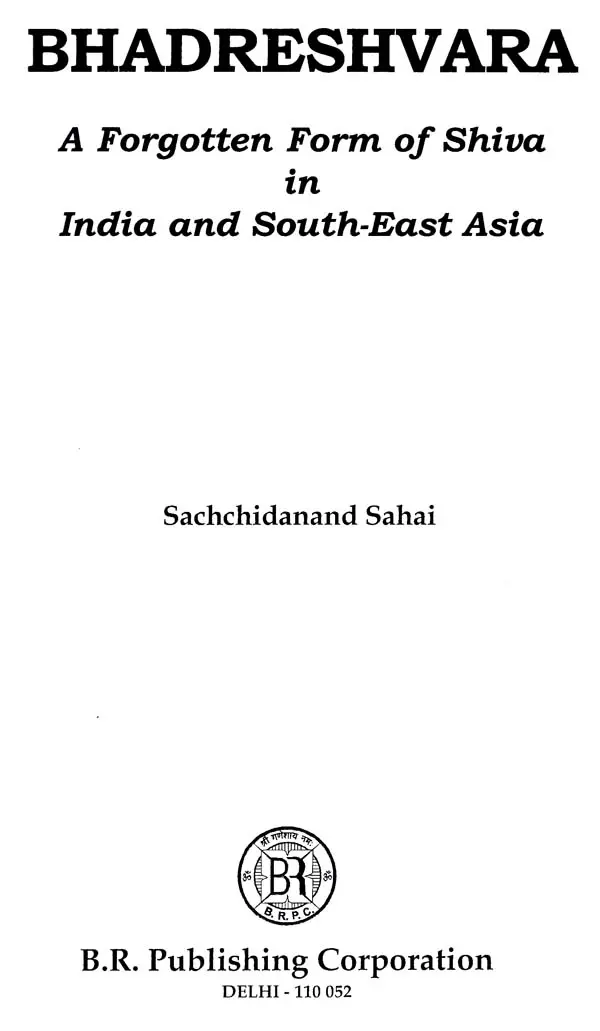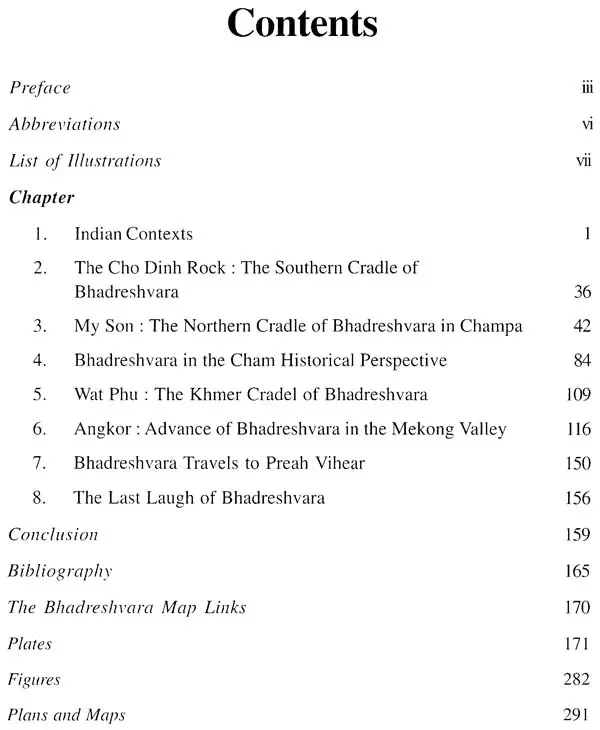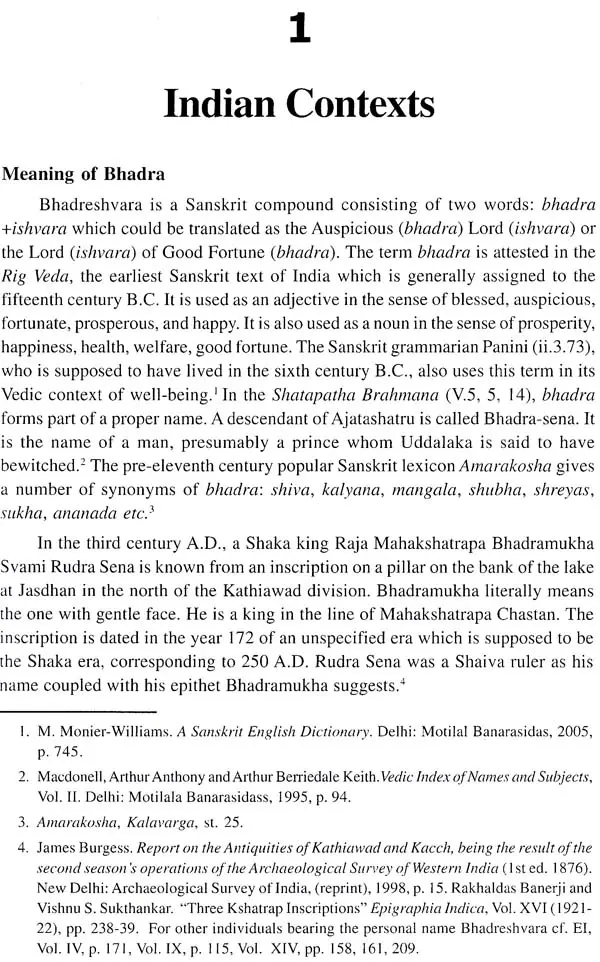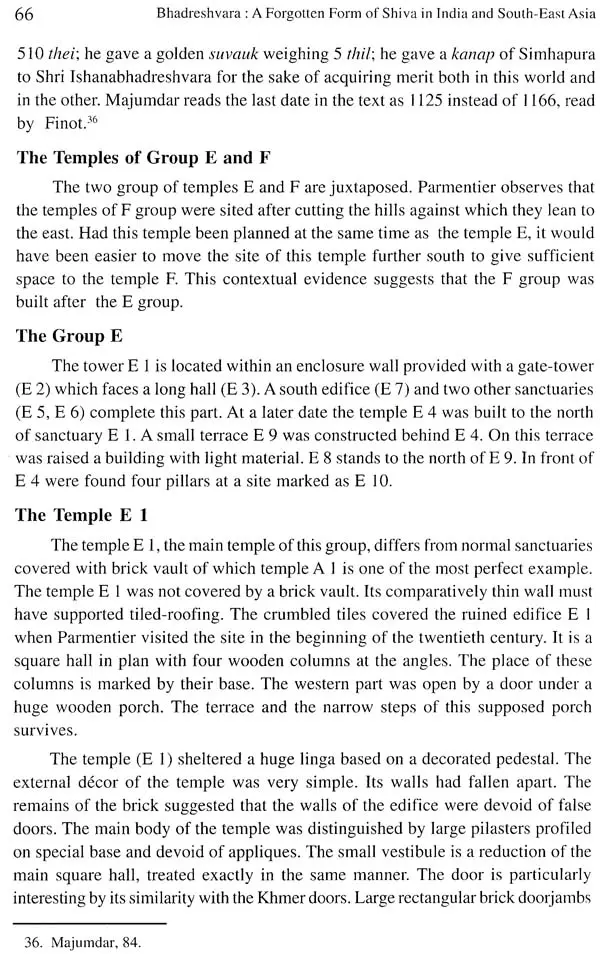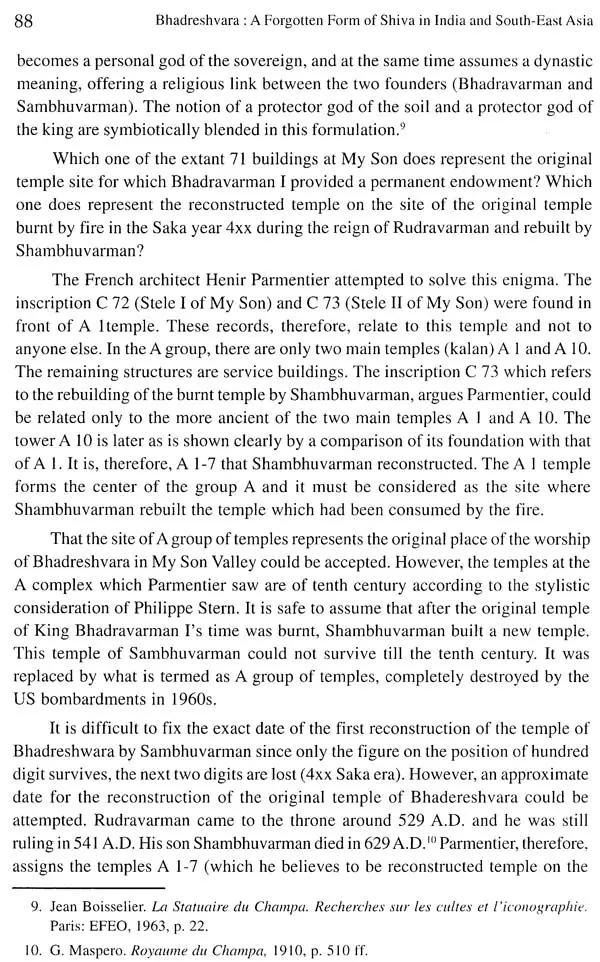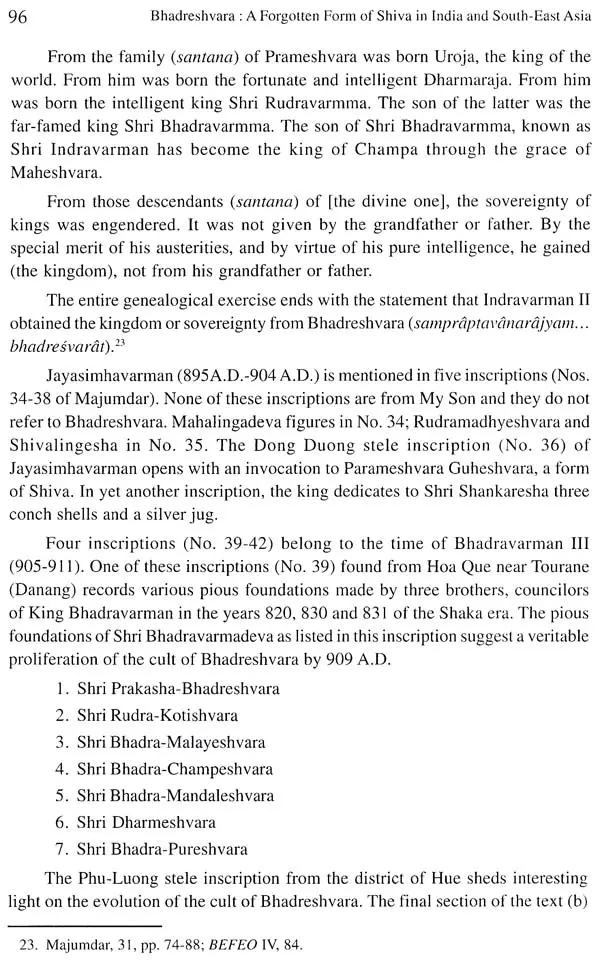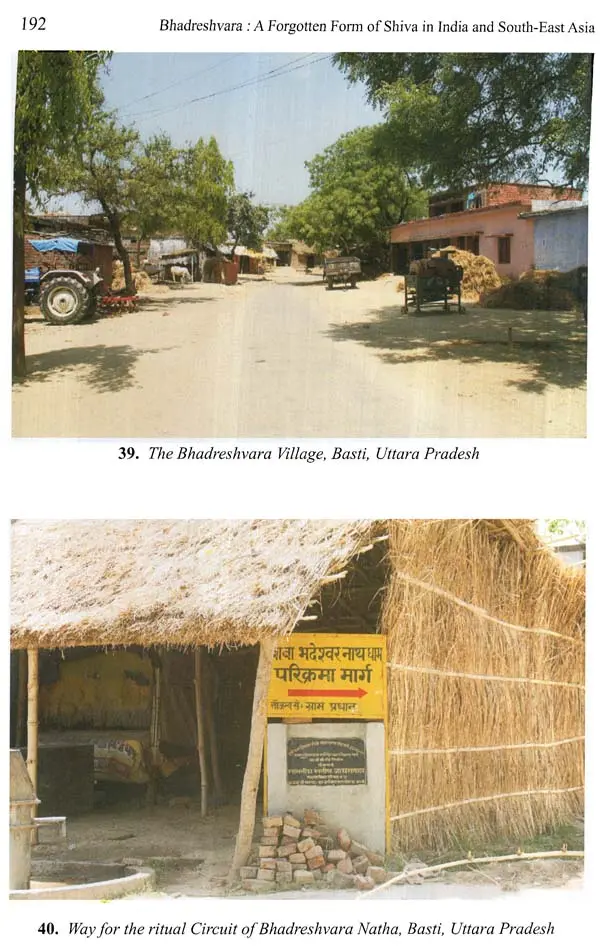
Bhadreshvara (A Forgotten form of Shiva in India and South-East Asia)
Book Specification
| Item Code: | UAK984 |
| Author: | Sachchidanand Sahai |
| Publisher: | B.R. Publishing Corporation |
| Language: | English |
| Edition: | 2016 |
| ISBN: | 9789350502396 |
| Pages: | 314 |
| Cover: | HARDCOVER |
| Other Details | 9.50 X 6.50 inch |
| Weight | 730 gm |
Book Description
Bhadreshvara, a Forgotten Form of Shiva in India and South-Eat Asia is a first ever-written book on this subject. The present-day main stream Hindus have completely forgotten this god. There is no India-fame temple of Bhadreshvara built by any king or high official. Some remote villages in different parts of India preserve the memory of this god in pre-modern temples, though an inscribed seal from Bhita (Allahabad) establishes the existence of Bhadreshvara as a two-armed god with indistinct attributes in the fourth century A.D. Indian Puranas declare him as a form of Shiva. The monograph clearly demonstrates that many aspects of Indian culture, lost in the country of its origin, are preserved in Southeast Asia. The author seamlessly combines his textual erudition with extensive grass-root field work, and offers in eight chapters the lost Indian contexts of world heritage Asia, dedicated to Bhadreshvara. The Cho-Dinh Rock and My Son in temples in Southeast Asia, Wat Phu in Laos, Angkor and Preah Vihear in Cambodia represent literally the travel of Bhadreshvara-Shiva from India to mainland in Vietnam, to mainland Southeast Asia. This breath-taking narrative unfolds the mysteries of unexplored domains embedded in art, architecture, epigraphy, archaeology, folk-lore and rituals. The final chapter, "the last laugh of Bhadreshvara" outlines the decline of this cult in Southeast Asia. For both the general readers and researchers the monograph offers an indispensable deeper understanding of India's cultural relations with Southeast Asia. This is one of the finest specimens of an interdisciplinary, integrated, holistic study of a theme in time and space, vaguely known to the specialists of Indian and Southeast Asian Studies.
Sachchidanand Sahai obtained M.A. degree in Ancient Indian History, Culture and Archaeology from Banaras Hindu University (1962). In the University of Paris, Sorbonne (1965-69) he researched under the supervision of eminent French savant George Credès and produced a pioneering doctoral thesis, published as Les institutions politiques et l'organisation administrative du Cambodge ancien, Paris: EFEO, 1971. He carried post-doctoral research at the Cornell University, Ithaca, New York (1982). Sahai held the Chair of Southeast Asian Studies at the Magadh University, Bodh Gaya (India) and worked as the Pro-Vice Chancellor of the University in 2001. He was also Fellow, Indian Institute of Advanced Study, Shimla (2003-2006); Research Professor at Indira Gandhi National Center for the Arts, New Delhi (1988-90); and Visiting Professor of Asian Civilization at Sisavangvon University, Vientiane (1970-73).
Sahai is recipient of French Government Scholarship, Fulbright post-doctoral Fellowship, Visiting Fellowship at Australian National University and Maison de Science de l'Homme (Paris). Sahai was awarded A.S. Altekar Gold Medal from Banaras Hindu University (1962), Pravasi Bharatiya Samman and Gold Medal, and Padma Shri (2012) for his contribution to the understanding of India's cultural relations with the neighboring Asian Countries.
As founder editor Sahai has edited and published thirty eight volumes of the Southeast Asian Review, since its inception in 1976. In 1981, he founded the international conference on Thai Studies.
Currently, Professor Sahai is National Professor of Epigraphy, Ministry of Culture, Government of India, New Delhi, Adviser to Preah Vihear National Authority under the auspices of the Royal Government of Cambodia. Expert of UNESCO for the Archaeological site of Sambor Prei Kuk (Ishanapura, Cambodia) and Member. Indian Council for Historical Research, Ministry of Human Resource Development, Government of India.
The present monograph relates to Bhadreshvara, a form of Shiva which is the least known to researchers. Scholars have noted references to this form of Shiva in the Cham and Cambodian epigraphy, but they have neither explained the significance of this from nor questioned about the circumstances that led to the unprecedented popularity of this cult in mainland Southeast Asia. As a result the wider public, both in India and Southeast Asia, remains totally unaware of this aspect.
It is not known for certain how the Shiva-related cults, particularly the cult of Bhadreshvara spread beyond India, crossing the vast stretch of ocean. Nevertheless, there is a very direct reference to Shiva's sea-voyage in the Skanda Purana: "You know the glorious Dronapura where the Lord of Parvati boarded the ship when the ocean got agitated at the end of Kaliyuga." This passage is simply a symbolical assertion of the sea-borne voyages to far-off lands, undertaken by Shaivite missionaries.
The cult of Bhadreshvara is central to Cham and Khmer civilization; many temples were dedicated to this god by the Cham kings in Central Vietnam, and the Khmer kings of pre-Angkor and Angkor period in Cambodia. There is, however, no testimony available so far about the adoption of this cult by an ancient Indian ruling king. Nor an ancient Indian temple survives to attest the prevalence of this cult in the past. Indeed, a number of pre-modern temples of Bhadreshvara are found throughout India. Many villages, cities or part of cities are also known as Bhadreshvara. Some place-names survive in modern Indian language-forms, Bhadesar, Bhadohi etc.
These survivals suggest that once upon a time the cult was well-spread throughout India. It went into oblivion in course of time. But the pre-modern temples in remote villages of India, and the villagers, devoted to these temples. keep the memory of Bhadreshvara alive; though they remember absolutely nothing about any specific aspect of this cult.
In these villages, Bhadreshvara is worshipped in the form of a linga of Shiva, and the villagers are aware of the fact they are worshiping Shiva in his Bhadreshvara aspect.
Book's Contents and Sample Pages
